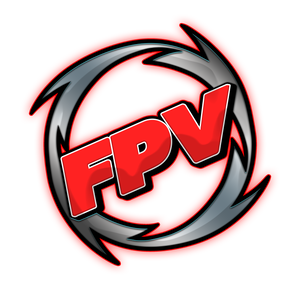
Setting up the HobbyWing Micro F4G2 Flight Controller from Cyclone FPV Tutorials
When configuring the HobbyWing Micro F4G2 for the first time you will need to know a few specifics. Here are some notes that will help:
Initial Setup and Firmware Update:
- In BetaFlight you will use the firmware update for OMNIBUSF4SD. If you attempt to use anything but this build, you will risk bricking the board or creating an unstable setup.
- To connect the board to BetaFlight you will beed the STMElectronics Virtual COM Port Driver.
- To check the version of firmware, simply log into BetaFlight and go to the CLI link at the bottom left. Then type "version" and hit enter. (don't type the "" with the word). Most boards will have something like Betaflight / OMNIBUSF4SD (OBSD) 3.2.1 Oct 15 2017 / 19:42:35 (434db9a36) MSP API: 1.36. This is clearly an old firmware build and you will need to update it.
- When flashing the firmware your settings should look like this:

- Once you are done flashing the board you can click connect and get started programming.
Setting Up Your Receiver:
- If you are using SBUS you will want to make sure that you connected the SBUS cable to the sbus pad that is located towards the back of the board. It is labeled SBUS and beside it are the the 5v and the ground (to the left). Use those pads to connect your receiver.
- In BetaFlight make sure you go to your Ports tab and turn on Serial Rx for port UART1 and then click Save and Reboot at the bottom right.

- Once you are done with that, go down to the Configuration tab and locate the section titled Receiver (left side about half way down)
- Make sure to drop down and select Serial-based receiver and then below it select SBUS in the drop down. Then click Save and Reboot
- It is now time to bind your receiver. Make sure to plug in your LiPo and if you are using a FrSky for example, place your transmitter in binding mode first. Once it is chirping, go to your quad and hold down the bind button on the receiver while you plug in the LiPo. If you did this right, you should see the light indicate that you are all set.
- To verify that you are good, make sure you have stopped the transmitter from binding and now go to the Receiver tab in BetaFlight. If you are bound, you will see the Channels (Roll, Pitch, Yaw, etc) have different values than 1500,1500,1500,885.
- The screen below is what a default Receiver screen looks like in BetaFlight if you are not connected to your receiver or if your receiver is not programmed properly in BetaFlight.

- As you can see, the quad is perfectly flat and all the values are at their default value (they are too perfect and not valued properly)
- Now, once you are bound, you will most likely see movement but, at the very least, you will notice the values change (see below)

- As you can see, the values have changed but now my quad it flipping and turning. This is due to the Channel Map on the top right of the screen being set incorrectly.
- Now all you have to do is change your Channel Map to match your transmitter mapping (in this case for me it is TAER) and everything goes to normal once you press Save. (see Below)

- Now that this is done you can move the sticks and verify that your quad is receiving input.
- ( I will stop here for now so that I can finish this build real quick)




